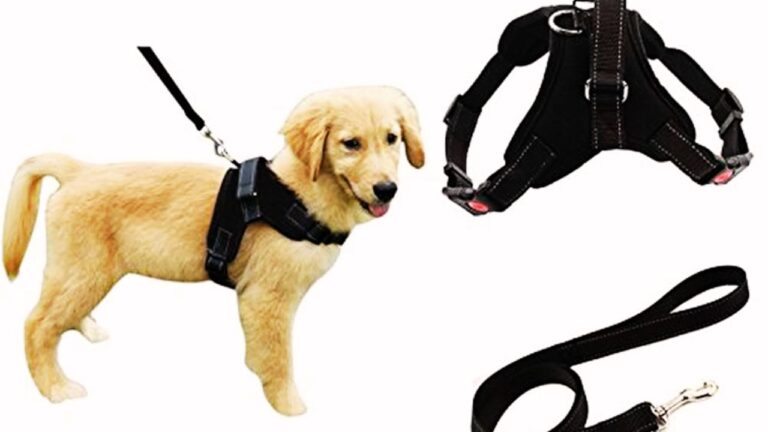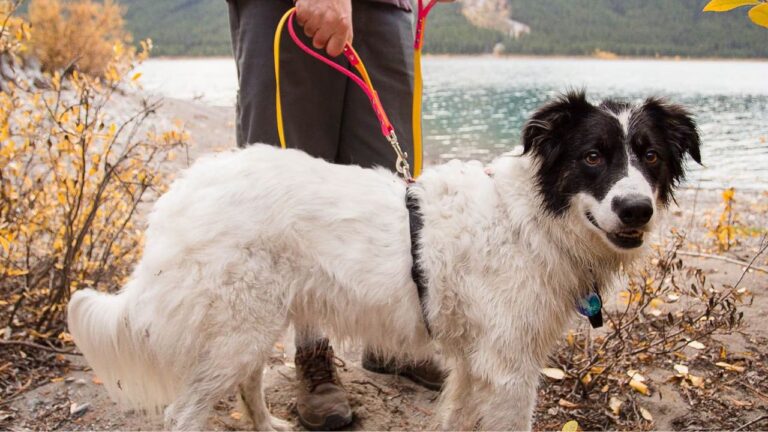The world of fluffy, fox-faced companion dogs is vast, but few comparisons are as nuanced as Spitz vs American Eskimo. Both breeds carry thick white coats, upright ears, and curled tails—but they differ in origin, size range, energy demands, and trainability. If you’re considering adding one to your family, understanding these subtle yet impactful differences can help you make a smarter, longer-term decision.
While the term “Spitz” often refers to a broad group of northern-type dogs with shared physical traits, in this article, we’ll specifically compare the German Spitz—one of the closest relatives to the American Eskimo. These breeds may look like cousins, but their histories and household behavior set them apart in key areas.
Check out the best dog collars for Border Collie to find durable, stylish, and comfortable options for your active dog.
Blog Highlights
ToggleSize Comparison: Small to Medium Dogs, Different Frames
Let’s first break down their average size growth from puppy to adult.
Growth Chart: German Spitz vs American Eskimo (Toy, Miniature, Standard)
| Age | German Spitz (Avg) | American Eskimo Toy | American Eskimo Miniature | American Eskimo Standard |
| 8 Weeks | 2–3 lbs | 1.5–2.5 lbs | 2.5–4 lbs | 4–6 lbs |
| 4 Months | 5–7 lbs | 4–6 lbs | 6–8 lbs | 10–14 lbs |
| 6 Months | 7–9 lbs | 5–7.5 lbs | 9–12 lbs | 15–18 lbs |
| 1 Year | 10–12 lbs | 6–10 lbs | 12–15 lbs | 18–25 lbs |
| Fully Grown | 11–13 lbs (Mittelspitz) | 6–10 lbs | 12–20 lbs | 25–35 lbs |
Note: There are five types of German Spitz (Zwergspitz/Pomeranian, Klein, Mittel, Groß, and Wolfspitz/Keeshond), but for parity, we’ll compare the Mittelspitz, closest to the American Eskimo Miniature/Standard in size.
For guidance on choosing the right collar size for an Airedale puppy, check out this detailed guide.
Physical Appearance: Fluff, Tail Curl & Expression
Key Physical Traits Comparison
| Trait | German Spitz | American Eskimo |
| Size Range | 9–13 in / 10–13 lbs | 9–12 in (Toy) to 15–19 in (Standard) |
| Coat | Long, double coat; feathered tail | Dense double coat; heavy ruff |
| Tail | Over back in a plume | Heavily plumed, curled over back |
| Eyes | Almond-shaped, dark | Oval-shaped, dark brown |
| Ears | Small, triangular, erect | Small, triangular, erect |
| Head Shape | Foxy, wedge-like | Slightly broader, teddy-bear like |
Despite their nearly identical silhouette, Eskies have a rounder, more expressive face, while German Spitz dogs appear foxier and more alert. The American Eskimo also has heavier feathering around the chest and legs, giving it a fuller, showier appearance.
Origins & History: Germany vs America by Way of Germany
- German Spitz is a foundational European breed dating back to the 1400s. Used as watchdogs and companions in Germany, they were prized for their loyalty, vocal nature, and trainability.
- American Eskimo Dog is actually descended from German Spitz. German immigrants brought Spitz dogs to the U.S. in the 1800s. Post-WWI anti-German sentiment caused the name to be changed to “American Eskimo” despite no connection to Eskimo culture.

Both breeds are intelligent and people-oriented, but the American Eskimo was further refined in the U.S. for showmanship, family life, and circus performance, which explains its theatrical expression and willingness to learn tricks. For insights on whether Airedales are good off-leash, explore this comprehensive article.
Temperament & Behavior: Alert vs Performative
Temperament Chart
| Trait | German Spitz | American Eskimo |
| Energy Level | Medium–High | High |
| Alertness | Very High | High |
| Watchdog Instinct | Excellent | Excellent |
| Trainability | Moderate | High |
| Prey Drive | Moderate | Low–Moderate |
| Barking Tendency | High | Moderate–High |
| Sociability | Wary of strangers | Friendly with socialization |
| Affection for Family | Very Loyal | Deeply Attached |
| Separation Anxiety Risk | Moderate | High |
German Spitz dogs are naturally suspicious of strangers and make excellent watchdogs. They are lively and independent but may be vocal and bossy if not trained early. The American Eskimo is more eager to please, making it better for obedience, tricks, and child-friendly environments.
Intelligence & Trainability: Circus Star vs Vocal Watchdog
The American Eskimo shines in competitive obedience and agility sports. Thanks to its history as a performing dog, it’s eager to learn routines, tricks, and complex commands. They respond well to food motivation and positive reinforcement.
The German Spitz is also intelligent, but they tend to be more independent-minded. They can be trained effectively but often require consistency, variety, and mental stimulation to stay engaged.

Training Chart
| Skill | German Spitz | American Eskimo |
| House Training | Easy | Easy |
| Command Retention | Moderate | High |
| Trick Learning | Moderate | High |
| Off-Leash Recall | Moderate | Low (distractible) |
| Obedience Reliability | Medium | High |
American Eskimos rank high on most trainability scales, while German Spitz dogs score well but not as consistently in structured training settings. Discover the benefits of using a harness by reading this guide on should a Collie wear a harness.
Grooming & Maintenance: Fluff Factor Counts
Both breeds have a dense double coat that sheds seasonally (and moderately year-round), but their grooming needs differ slightly due to coat texture and size.
| Grooming Trait | German Spitz | American Eskimo |
| Shedding | Moderate–High | High |
| Brushing Frequency | 2–3x per week | 3–4x per week |
| Coat Type | Straight outer, dense undercoat | Silky outer, cottony undercoat |
| Bathing Frequency | Every 6–8 weeks | Every 6–8 weeks |
| Tear Staining | Rare | Common (especially white coats) |
American Eskimos tend to mat more easily behind the ears and around the hind legs due to their fuller feathering, while German Spitz coats are more resistant to tangling. Both need regular brushing to maintain volume and skin health.

Health & Lifespan: Small But Sturdy
Health Comparison
| Health Concern | German Spitz | American Eskimo |
| Patellar Luxation | Moderate Risk | Moderate Risk |
| Dental Disease | High Risk (small mouths) | High Risk |
| PRA (Eye Degeneration) | Possible | Possible |
| Hip Dysplasia | Rare | Rare–Moderate in Standards |
| Lifespan | 13–15 years | 12–15 years |
Both breeds are hardy and generally long-lived. With good care, it’s not uncommon for either to live well into their mid-teens. Toy and Miniature Eskies may have slightly more dental crowding issues due to jaw size.

Lifestyle Suitability: Which Breed Fits Your Home?
For Apartment Living?
- German Spitz: Excellent; doesn’t require tons of space but needs stimulation
- American Eskimo Toy/Mini: Great fit; regular walks and mental tasks suffice
- American Eskimo Standard: Needs more space and physical activity
For First-Time Owners?
- German Spitz: Good if you’re consistent and understand vocal breeds
- American Eskimo: Excellent; intelligent and responsive to positive training
For Families with Kids?
- German Spitz: Better with older children due to alert nature
- American Eskimo: Excellent; playful and affectionate with kids
For Long Work Hours?
- German Spitz: Can adapt with proper crate training
- American Eskimo: Not ideal; separation anxiety is common

Summary Table: Spitz vs American Eskimo
| Trait | German Spitz | American Eskimo |
| Origin | Germany | USA (from German Spitz) |
| Size | 11–13 lbs (Mittel) | 6–35 lbs (Toy to Standard) |
| Height | 9–13 inches | 9–19 inches |
| Coat | Dense, less fluffy | Extra fluffy, ruff-pronounced |
| Barking | High | Moderate–High |
| Trainability | Moderate | High |
| Sociability | Reserved | Friendly |
| Lifespan | 13–15 years | 12–15 years |
| Best For | Small homes, alert owners | Families, obedience, tricks |
| Energy Level | Medium–High | High |
Final Verdict: Spitz or American Eskimo?
Spitz vs American Eskimo: If you want a more compact, fox-like watchdog that stays loyal, alert, and manageable indoors, the German Spitz is an excellent low-to-moderate maintenance choice. It’s especially ideal for solo dwellers or couples who appreciate an intelligent, no-nonsense companion with a lot of bark for its size.
However, if you’re looking for a fluffy, charismatic family dog with circus-level obedience and a big personality, the American Eskimo—especially the miniature or standard size—might be the better match. It’s friendlier, more social, and deeply bonded to its people but requires more grooming and mental stimulation.
Learn if Dachshunds need special collars to provide the right support and comfort for their unique body shape.
In the end, both breeds bring sparkle, smarts, and spirit to the home. The right choice depends on your household energy, grooming commitment, and the personality that fits your daily life.





